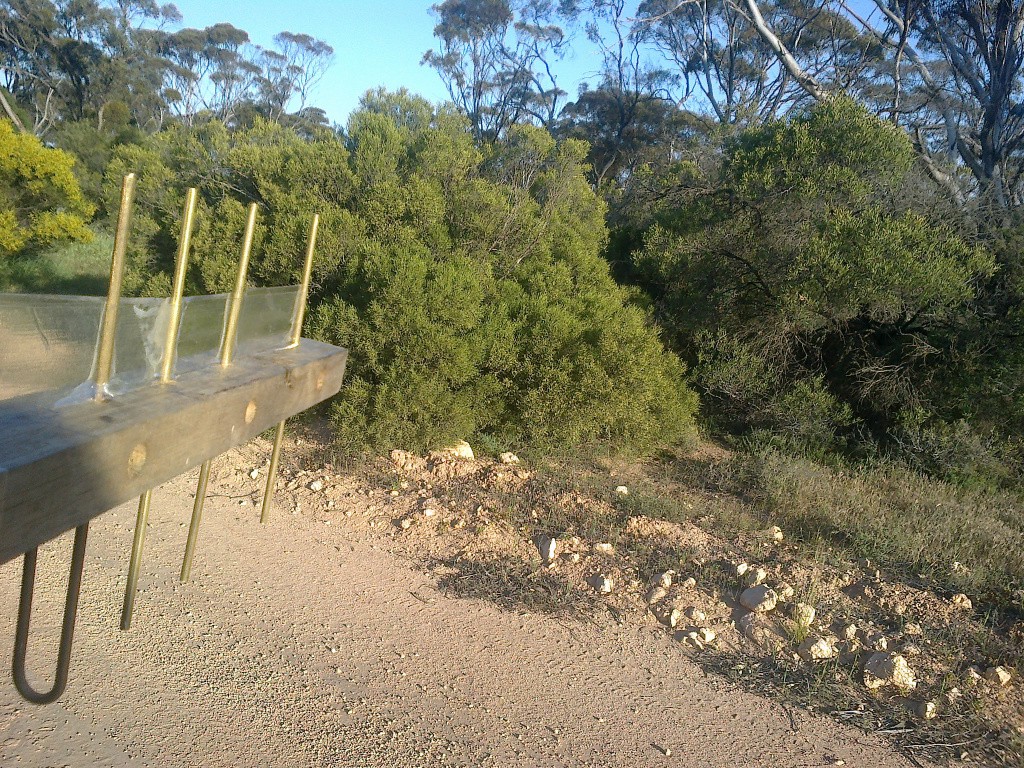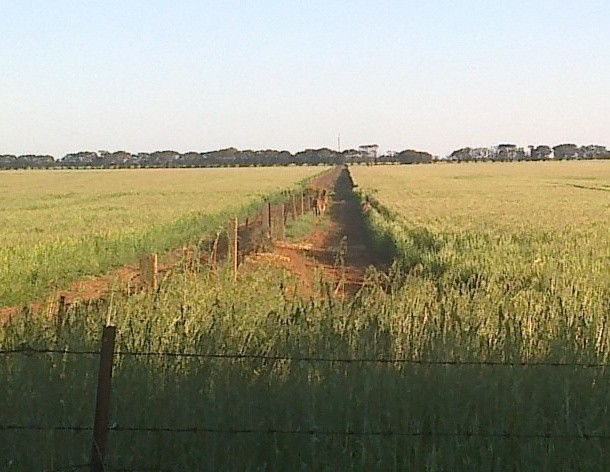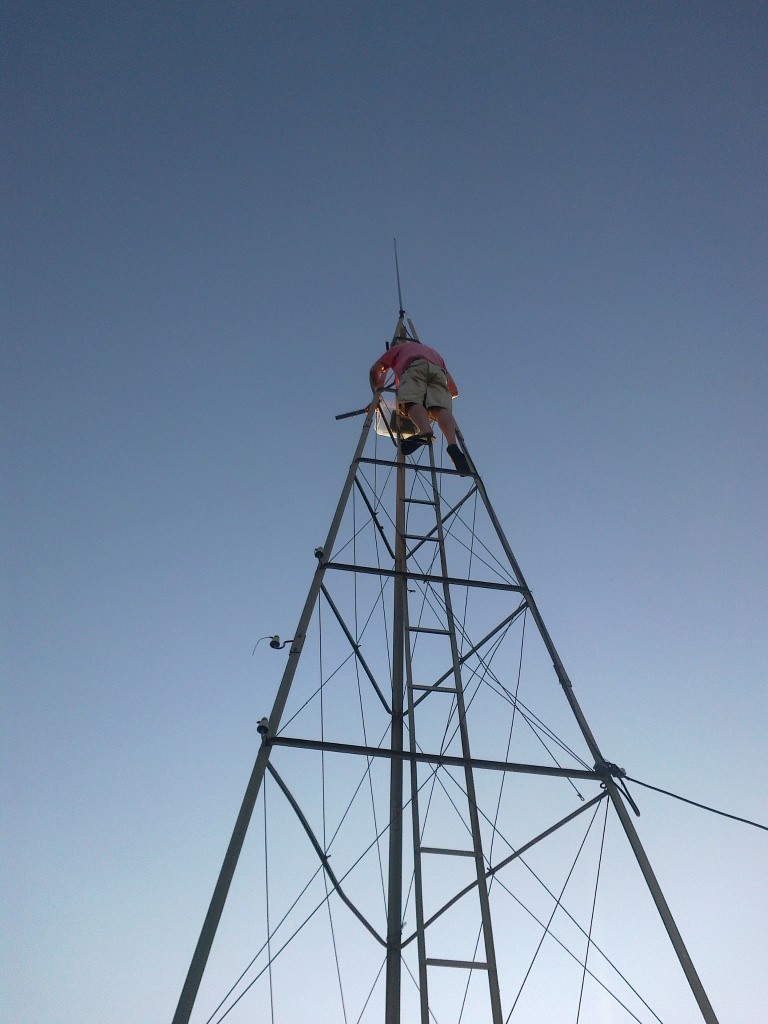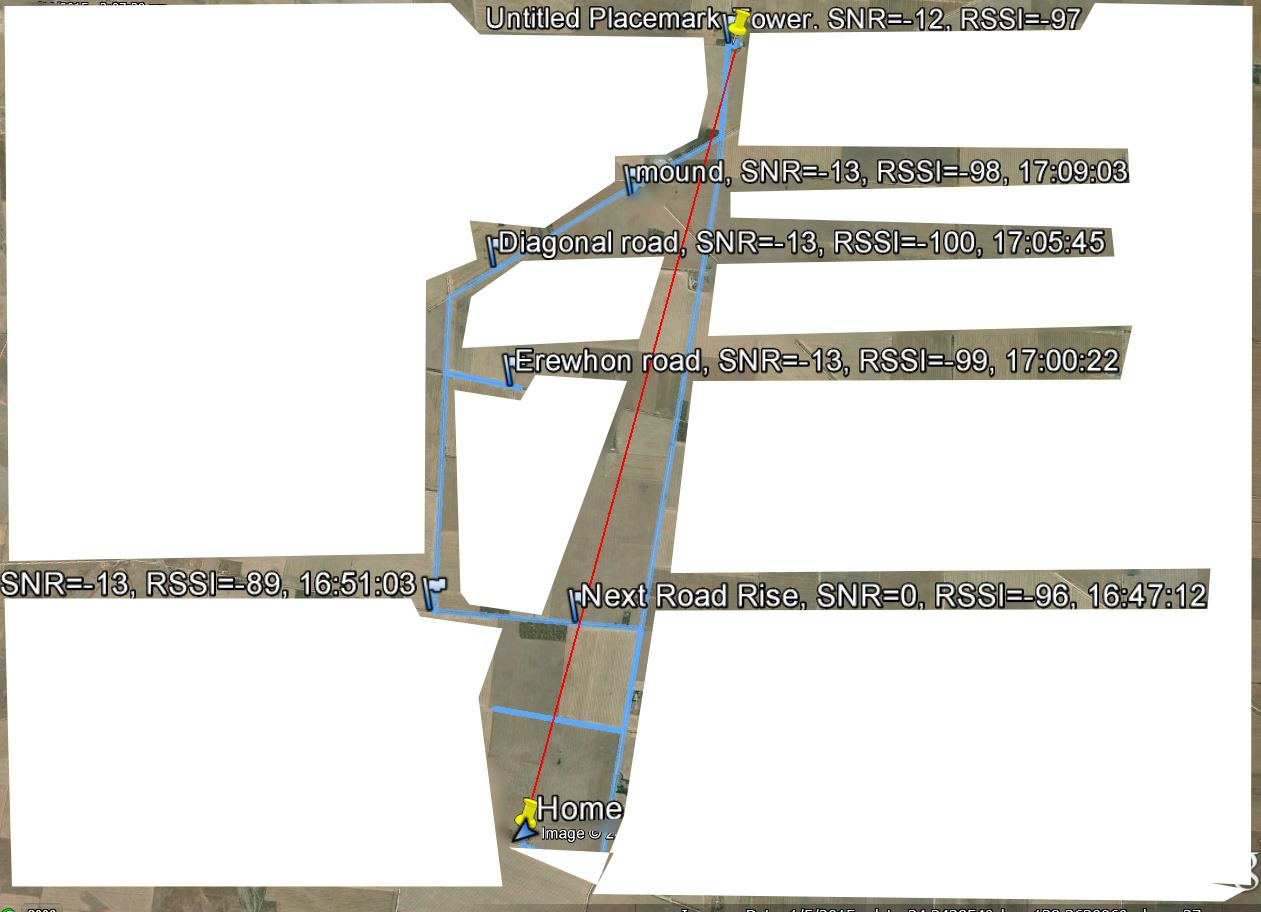Having already achieved our goal of reception at the distant end of the large test paddock we went for a drive.
So remember yesterday, I mentioned a scrub plot 2km distant...

I could get a signal through this! (note:beacon time was offset ~09:48 behind local time) The range to the transmitter is 2100m.
[DBUG] RX rssi_pkt=-100 snr_pkt=-14 stat=38 sz=37 ptr=38 hdrcnt=564 pktcnt=534
[RX] 37 bytes, crc=0 rssi=-100 DATA=54582042
TX BEACON 6658 13-09-2015 06:56:00
Well, we just got a signal; the RSSI was just on the edge. But with digital thats all you need.
Just down the road, we met these felllers:
unfortunately, my phone camera is not high quality - those brown splodges near the fence are Kangaroos.
And we kept driving. After driving north a while, we lost the signal, not unexpectedly. So we took a right turn. After moving back into the beam coverage, we had signal again at 4100m, and kept driving. At our furthest range, still from the car, we finally logged the last beacon at 6100m. All this time, the only elevation on the receiver was me holding my arm up and out the car window! Remember, the transmitter was only 1m above the ground as well.
Beyond that range, we needed a bit more help. A mound at the local club gained us some height, perhaps 3m. And another signal. Range: 7000m!
As the map shows, all our reception was roughly in the expected beam of the transmitter. Which is fine!
Finally, this is Australia, so we did what we had to do. Well, our intrepid farmer did, anyway, and climbed up the tower at his place. It took a bit of fiddling, because at this range with directional antenna the sensitivity is quite fine.

But finally, several meters up, he was able to receive the beacon. At a grand distance of 9300m. Woot!
So, the day exceeded our expectations completely. I was expecting to have to tweak the radio settings (increase bit error correction, lower bit rate) and require more elevation of the transmitter to get beyond a couple of K's. So those little inAir9 modules pack a punch!
 pastcompute
pastcompute
Discussions
Become a Hackaday.io Member
Create an account to leave a comment. Already have an account? Log In.
I'm particularly happy how the five element yagi worked out. Having access to a decent drill press means you can put the elements in the boom square. Last yagi I made with a hand drill, the elements didn't line up =/ I've been looking at commerical yagis and collinear verticals, typical cost around 100-120$AU each.
It might be better value for money for us to build them for the prototypes, but in the long term, we might be better off getting commercial units for permanent installs. The commercial units are a lot more robust. If we had the tools to bend aluminium tube, we could make yagis. First we will have to spend some quality time inside of antenna modeling software... Its possible we can scale down some existing designs as a starting point, then tweak.
Are you sure? yes | no